Woodturning is a unique and extremely interesting technique of woodworking, which can turn a plain block of wood into beautiful handcrafted pieces. While it may seem daunting, woodturning is quite simple, especially if you have the proper tools and have the know-how.
So, what is woodturning? Essentially falling under the art of woodworking, woodturning is regarded as a unique and different craft. It is the process of carving a wooden block using a lathe and other tools to cut and mold the wood into a symmetrical shape and creating various objects such as bowls, lamps, candlesticks, rolling pins, chess pieces, egg cups, baseball bats, Christmas ornaments, doorknobs, sculptures, urns, etc.
Table of Contents
- As A Beginner At Woodturning, What Do I Need To Get Started?
- What Is The Difference Between A Small And A Large Lathe?
- How To Set Up My Lathe?
- What Type Of Tools Do I Need for Woodturning?
- Can I Turn Any Kind Of Wood?
- Do Different Woods Turn Differently?
- When To Use Wet Wood And Dry Wood For Turning?
Woodturning Process
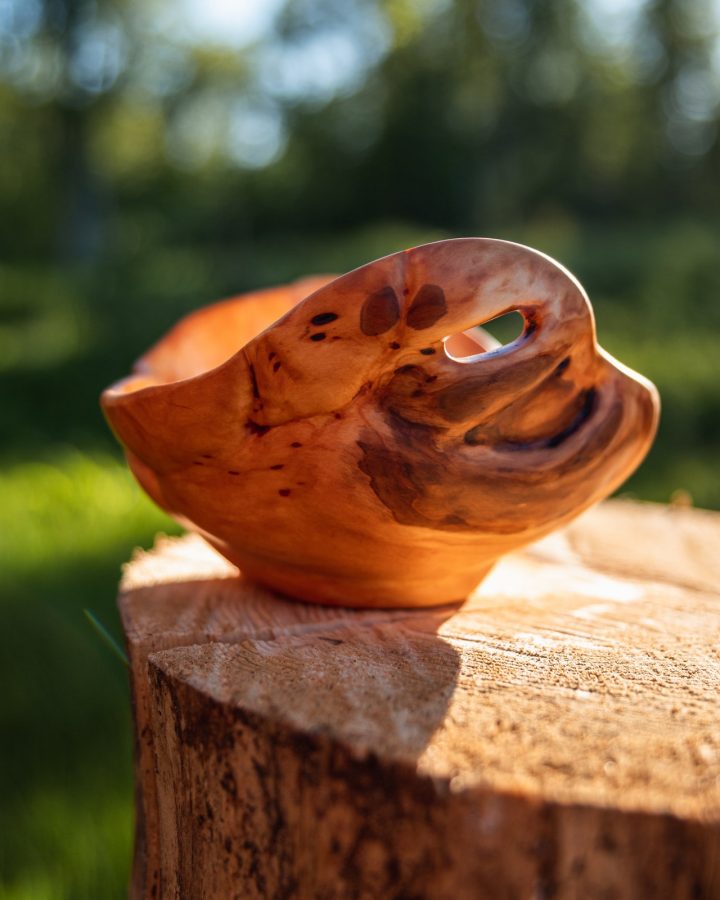
Other forms of woodworking usually have the wooden piece, which is stationary and the tools move to create the required cuts. However, in woodturning, the wood turns or rotates on an axis, while the cutter is fairly stationary.
The process of woodturning essentially involves placing wood on a motor-driven lathe. A lathe is a tool that is used for various operations like cutting, drilling, sanding, turning, facing, knurling and deformation. The lathe turns at a very high speed and turns the wood on an axis.
The wood is then molded using a variety of knives and chisels to carve the wood in the shape you want. While today, the process of woodturning has been largely industrialized, it is still used by hobbyists or turners looking to make customized or limited pieces.
Woodturning History
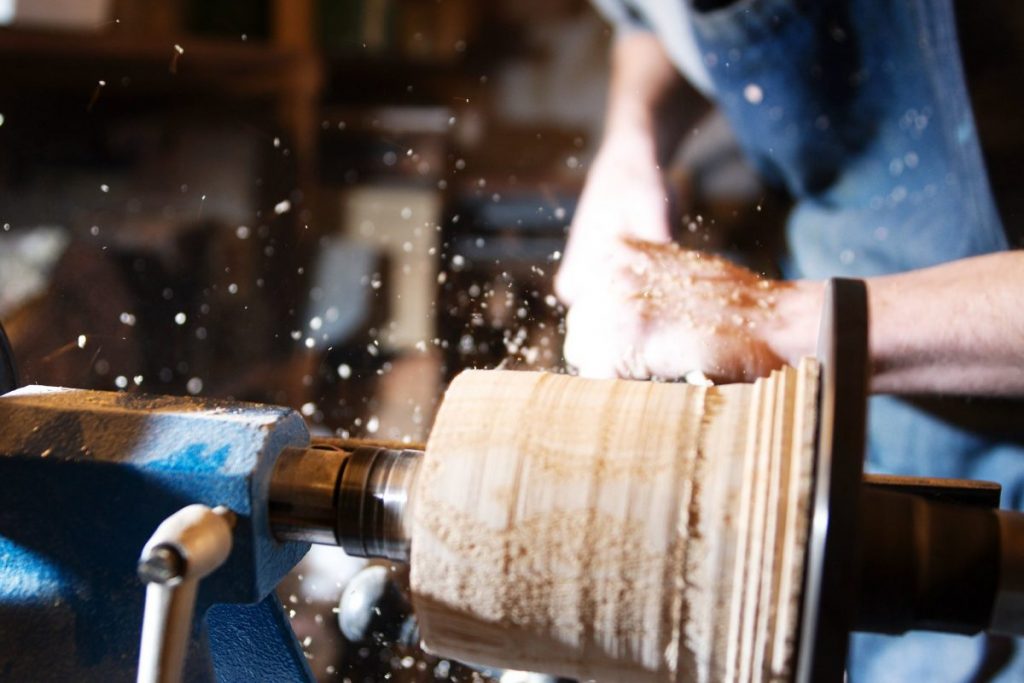
Lathes have been used for several centuries and their use can be traced back to ancient Rome and Egypt. And, woodturning was recognized as a valuable skill and was practiced for centuries in countries across the world. In the early times, woodturners used their feet to hold the tools in place, while they powered the lathe with their hands.
In the period between 500 AD and 1500 AD, the first examples of woodturning were seen, where cups and bowls were produced using this process. In the 1500s, the lathe was powered by a flywheel; however, with time and advancements in technology, the machine was operated by using different types of power sources such as water, steam, and electricity.
The 19th and 20th centuries saw the advent of turning shops in Britain, which used the master-apprentice system. The operator was called the turner, while the skills required to use the woodturning tools were called the turnery. In fact, woodturning was acknowledged to be quite difficult and the skills were called “the misterie” of the turner’s guild.
Even in the US, woodturning was part of the school curriculum and included learning skills such as building furniture, tool management, etc. Even today, this is part of the curriculum of some schools.
Types of Woodturning
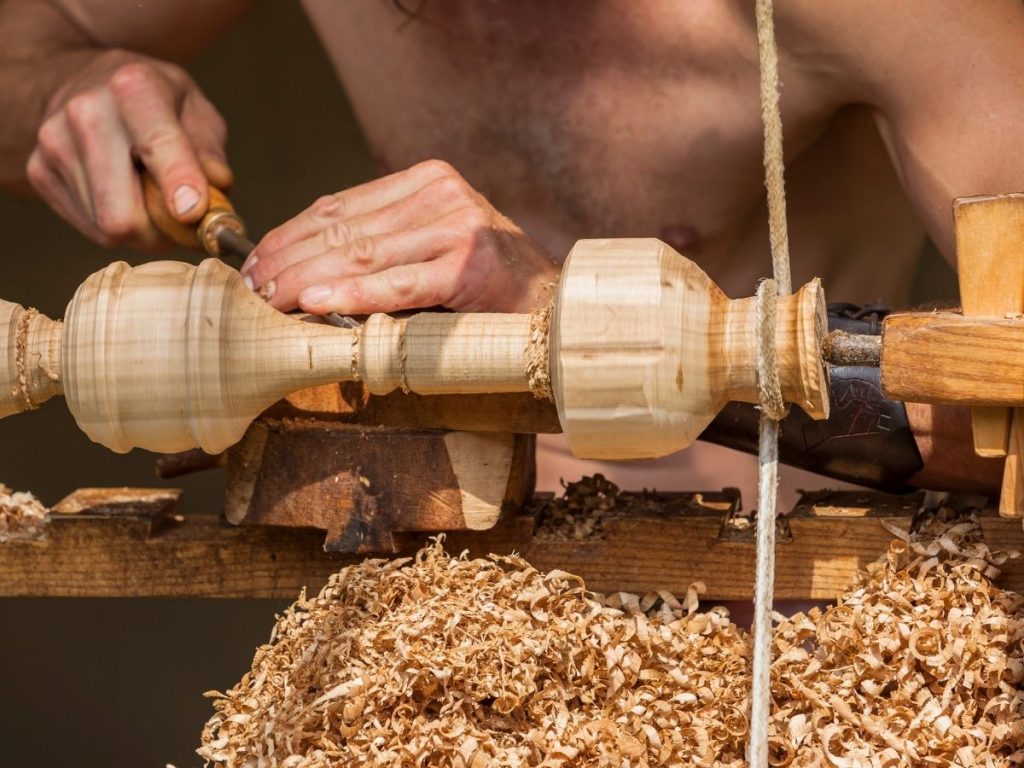
When turning wood, the grain of the wood is a very important aspect to consider, and the type of turning depends on the direction of the wood grain. Woodgrain is essentially the appearance, as well as the texture of the fibers that comprise the wood. The alternate dark and light areas make up the grain of the wood.
The 2 basic types of woodturning are spindle turning and faceplate turning and they mainly differ in terms of the direction of the wood grain in relation to the lathe’s axis. In this section, we have discussed the two basic types of woodturning and the other variations of these methods.
Spindle Turning
This is the most basic and commonly used woodturning technique. In this technique, the wood is mounted between the head and tailstock of the lathe. In spindle turning, the grain of the wood is essentially in line with the bed or spindle of the lathe, and this form of turning is usually used to make vases or chair legs. You can use different types of spindles for spindle turning depending on the specific application.
Faceplate Turning
Faceplate turning is a single fluid turning technique and is quite different compared to spindle turning. Offering more freedom, faceplate turning comprises a circular plate made of metal that is fixed at the end of the lathe, which helps to hold the wooden piece. In this form of turning, the grain of the wood is at 90 degrees to the lathe’s axis. Faceplate turning is a good timesaving turning option.
Other Woodturning Methods
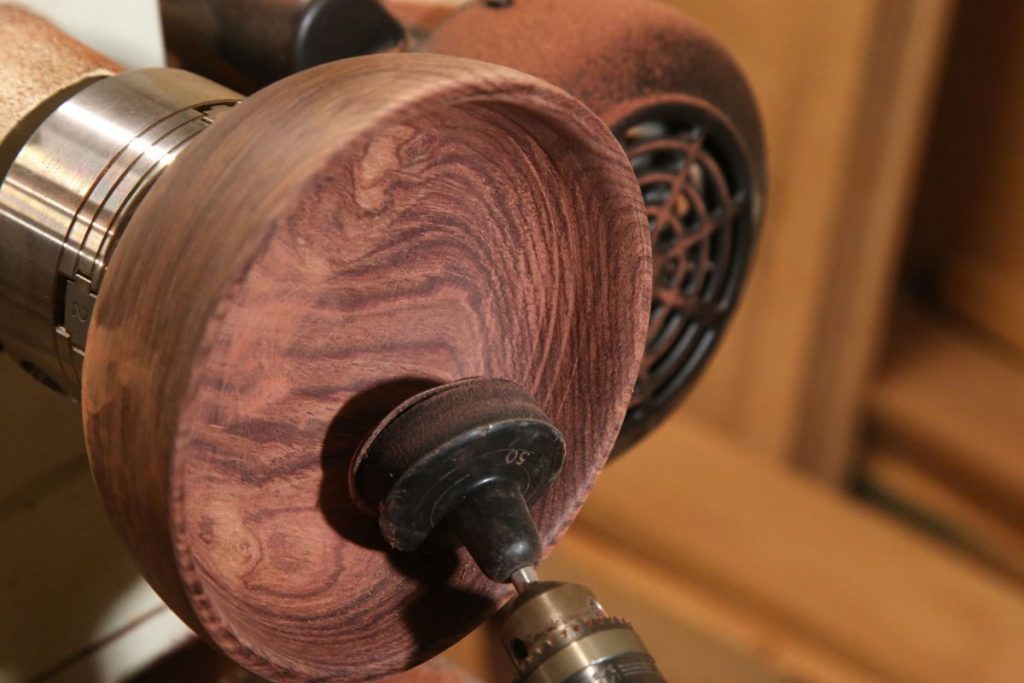
Segmented Turning
In this method, many different wood pieces are taken together, which form a wood blank (a rough piece of wood) and the entire turning is made from multiple segments. All the pieces of wood are glued together to form a solid piece before the turning process is started.
You can use segmented turning to create some beautiful patterns and formations. Some of the larger segmented turnings may include hundreds or thousands of wood pieces, which are cut and assembled precisely and then turned to form unique pictures and designs.
Decorative Spindle Turning
This is different from regular spindle turning because it involves the sizing, smoothing, and roughing of the stocks of wood. Decorative turning involves a more intricate form of cutting and allows you to make intricate grooves, shapes, and curves in the pieces.
Bowl Turning
You can make use of a bowl gouge to get the perfect bowl that you’re looking for. The technique of bowl turning essentially requires a gouge bevel, which you hold on a wooden blank, which is cut and molded in a bowl shape. You can then use scraping tools to create a beautiful bowl that is perfect.
Green Turning
When recently cut or newly cut wood having high moisture content is turned, it is known as green turning. The process of green turning is quite easy because the tools cut the wood quite easily.
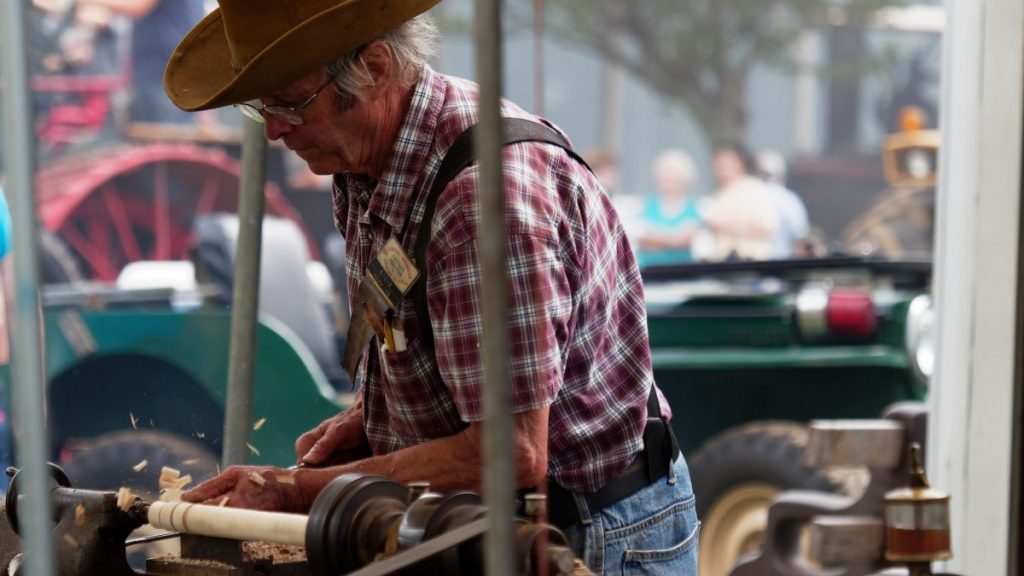
Also, the process of green turning does not produce a lot of dust. However, the drawback of green turning is that as the wood starts to dry, it begins to shrink, which may cause it to warp or crack.
Often, people let the wood get distorted by shrinking so that they get a unique finished wood; while some turners turn a green piece two times to reduce the distortions. In this case, the wood is first turned when it is green to the general shape and sufficient thickness is left so that when the wood dries, it will be fairly uniform. And, the second turning is done when the wood dries and stabilizes. The piece is then turned to its final thickness and shape.
Natural Edge Turning
In this, the wood piece consists of a limb of the tree or the outer part of the tree trunk. Natural edge turnings are generally artistic turnings and are used to make hollow vessels, bowls, etc. and they are typically green, which are turned to the final dimensions.
Multi-Axis Turning
In this type of turning, a single piece of wood is turned several times and each time it is turned, a different pair of centers are used. To do this, you can simply mount the workpiece by using a special adjustable chuck or by hand to hold the workpiece away from its original center.
Ornamental Turning
The ornamental turning method uses a specialized machine, which is known as a rose engine lathe. The wood stock is mounted on the rocking headstock and the spinning tool is used to cut exquisite and beautiful decorative patterns.
Frequently Asked Questions

As A Beginner At Woodturning, What Do I Need To Get Started?
If you are a beginner, the first thing to invest in is a lathe, which helps to spin the wood. A small lathe will be perfect for you as a beginner and you don’t require a big, heavy-duty lathe. You can also make your DIY lathe by making use of a drill or drill press.
What Is The Difference Between A Small And A Large Lathe?
The main difference between a small and large lathe is essentially its capacity. You will require a larger lathe if you’re planning to turn larger workpieces. For instance, a large lathe can turn into a 24-inch bowl, while a smaller or desktop lathe can turn 10-inch bowls.
Also, larger lathes are equipped with longer beds, while smaller lathes have a shorter bed length, which you can lengthen by making use of extensions. A larger lathe is generally stronger and sturdier and can handle large workpieces without becoming unstable or shaking. However, if you use medium size wood pieces and if you secure your lathe properly, then size does not matter.
How To Set Up My Lathe?
First, unbox the lathe and put it in your live center and spur center, and ensure they meet in the middle. Then use a lubricant or WD40 on the bed so that everything slides smoothly. Every time you turn, make sure to reapply the lubricant. If the lathe is a desktop model, then make sure that you anchor it properly and secure it. Check the belts and ensure that the speed is right for your turning project.
What Type Of Tools Do I Need for Woodturning?
There are 2 types of tools you can use for woodturning—traditional and carbide cutting tools. While carbide-cutting tools are much simpler to use, it takes a bit longer to learn to use traditional tools. Traditional tools require to be sharpened as you use them with a grinder, whereas, in the case of carbide cutting tools, when the tips become dull, you can simply replace them. Traditional tools such as a roughing gouge are usually held at an angle, whereas carbide cutting tools are usually held straight while cutting.
Can I Turn Any Kind Of Wood?
Yes, while technically it is possible to turn any type of wood, it is better to keep away from pressure-treated wood. Also, some types of woods such as rosewood, cocobolo, etc. may cause irritation. And, irrespective of the kind of wood you’re turning, if you inhale a lot of the dust produced, it can cause respiratory problems. So, while woodturning, it is always a good idea to wear a respirator or a mask.
Do Different Woods Turn Differently?
While it is possible to turn any type of wood, some woods turn better than others. For instance, harder woods such as walnut, maple, cherry, and apple woods are hardwoods and turn better than softer woods like framing lumber.
When To Use Wet Wood And Dry Wood For Turning?
If you don’t want the wood to shrink or have any movement after turning it, then it is better to use dry wood. For instance, if you’re making boxes, then it is better to use dry wood so that the lid does not shrink later.
Green or wet wood is commonly used for articles like bowls. When the wood is wet, you do the first, rough turn and allow the bowl to dry for 1 year, and turn it again when the wood is dry. Turning wet wood is easier because it is much softer compared to dry wood and it is fun too.
While woodworking has come a long way because of advancements in machinery and technology, woodturning is a bespoke art that goes back to its roots. And, whether you want to take up woodturning as a profession or a hobby, it helps to save time and money, while being immensely satisfying and fun.
